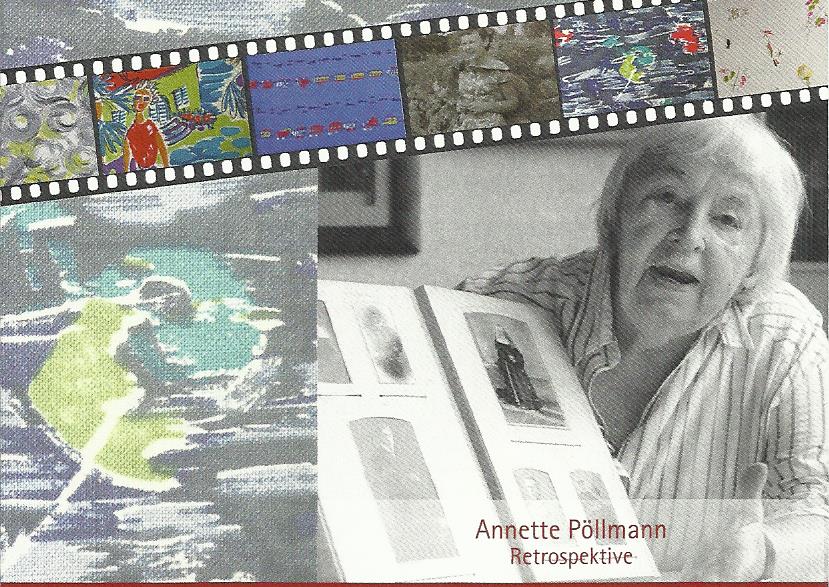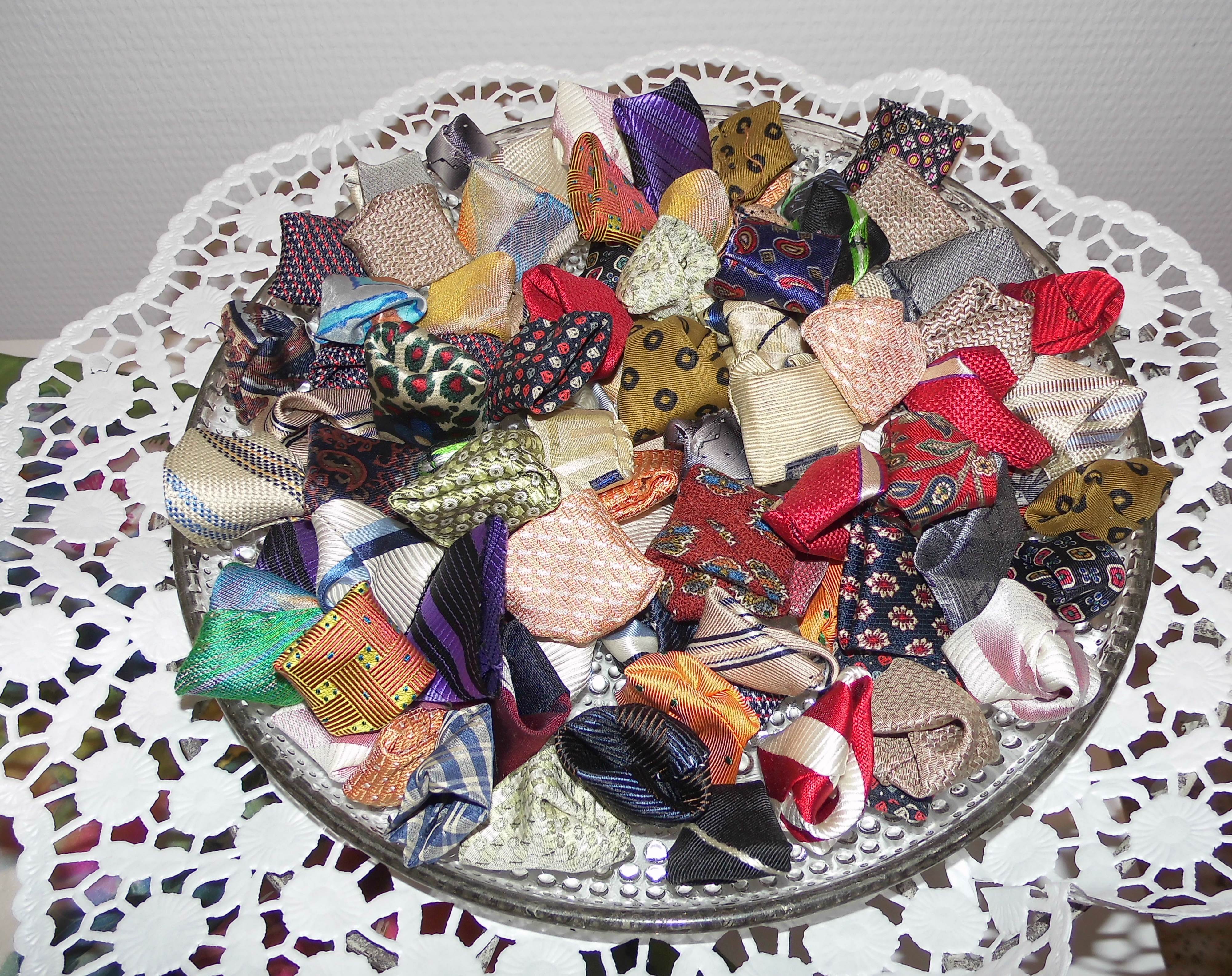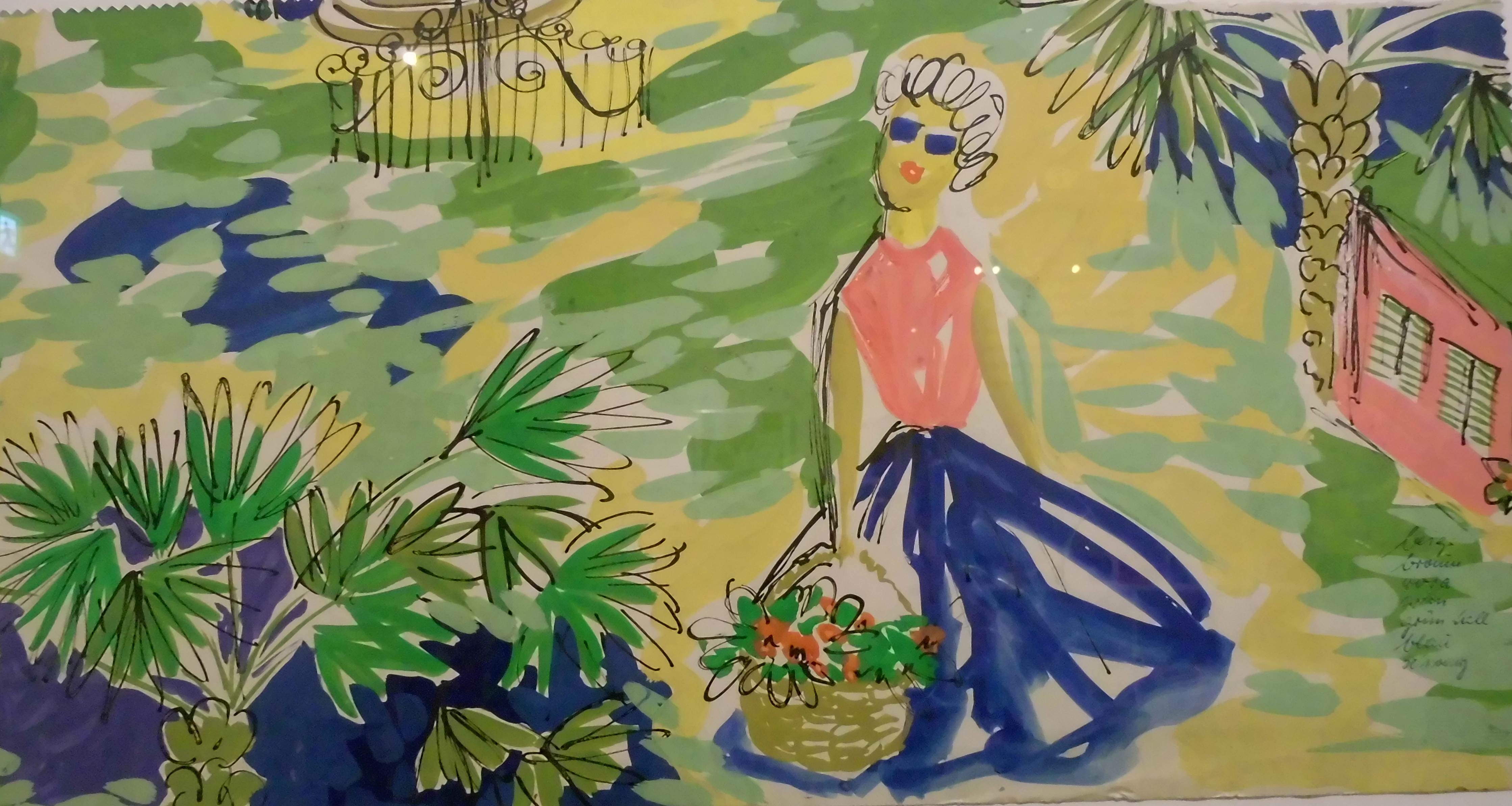(Life)Works of Annette Pöllmann at Haus der Seidenkultur
“Als die Muster laufen lernten”, (When patterns found their feet) is the title of the new temporary exhibition being held at Haus der Seidenkultur (HdS) until 4th June 2017. The exhibition is dedicated to the life work of the Krefeld-born artist and educationalist Annette Pöllmann. A graduate of the Textile Art School at the Textile Engineering School (TIS) – now known as Hochschule Niederrhein (College) – she returned to the Town like Silk and Velvet having spent time in many different places in Europe.
Curator Dr. Ulrike Denter invites visitors to “become immersed in the creative world of Annette Pöllmann, whose work testifies to a great eagerness to experiment and to constantly develop further” at the Museum in Luisenstraße 15.
In the newspaper produced by pupils to mark the end of their school career, Annette Pöllman’s artistic talent was already highlighted in the following rhyme: „Geschickt bringt sie auf das Papier: Köpfe, Blumen, Fabeltier.“ (She skillfully sketches faces, flowers and fabulous creatures). Initially however she intended to study French and art history but had to abandon this plan because the corresponding college places were given to those returning from the war.
In the end a friend gave her the tip: “In Krefeld there is something to do with drawing which would suit you.” That is how Annette Pöllmann’s attention was drawn to the TIS in Krefeld. She still remembers her first contact to this day: “In a former factory in the Lewerentzstraße there was a picture in the classroom which puzzled me – a blue horse. I was curious. I was fascinated. And although the method of teaching was very unfamiliar to me, I knew immediately that I was in the right place!”
Annette Pöllmann passed the entrance examination in the year 1948 and took up her studies at the TIS in the print design class run by Elisabeth Kadow. Having graduated in 1950 and following the advice of Elisabeth Kadow, Annette Pöllmann then continued her studies in the master class under Georg Muche. In 1939 Georg Muche had come to Krefeld at the instigation of Johannes Itten and set up the master class for textile art.
After many different stages in her highly contrasting artistic development, Pöllmann returned to Krefeld in March 1962 to take over the print design class at the TIS. She was the first lecturer with professional experience to teach the subjects drawing, painting, design and colouring in the modern school with large windows situated on the Frankenring.
The vernissage was also attended by 14 former students of Prof. Pöllmann who recently celebrated her 91st birthday. When you think of this, her former students are “also getting a bit long in the tooth” says Chairman of the Association of Friends, Hansgeorg Hauser with a grin. And: “The fact that the students still stand by their professor after so many decades is a high commendation!”
Another surprise guest was Thomas Grosche, Mayor of the town of Medebach. Once Prof. Pöllmann installed hundreds of prayer flags in the town hall of the former hanseatic town – another project with which she caught peoples’ attention beyond the bounds of Krefeld.
The diversity of her artistic skills – for example she developed a method of colouring to transfer water colours to silk – can be seen in the exhibition “Als die Muster laufen lernten” (When patterns found their feet) at the museum in Luisenstraße 15 from 26.03.to 04.06. during the opening hours from Wednesday to Friday from 15.00 to 18.00 hours and Sundays from 13.00 to 17.00 hours. Individual guided tours at any time can be booked under Telephone 02151-510812 or by email to This email address is being protected from spambots. You need JavaScript enabled to view it..

HdS Graphics: Ilka Neumann
The textile artist makes “Sweets” from old neck-ties.
Prof. Pöllmann caught her enthusiasm for her first trip to Italy in a watercolour. Later this was turned into a motif for an eye-catching fabric for a skirt. At least 20,000 metres of fabric were printed with this pattern. “The company had to print this quantity in order to make a profit”, says Prof.Pöllmann.
HdS-photos: Brenner


